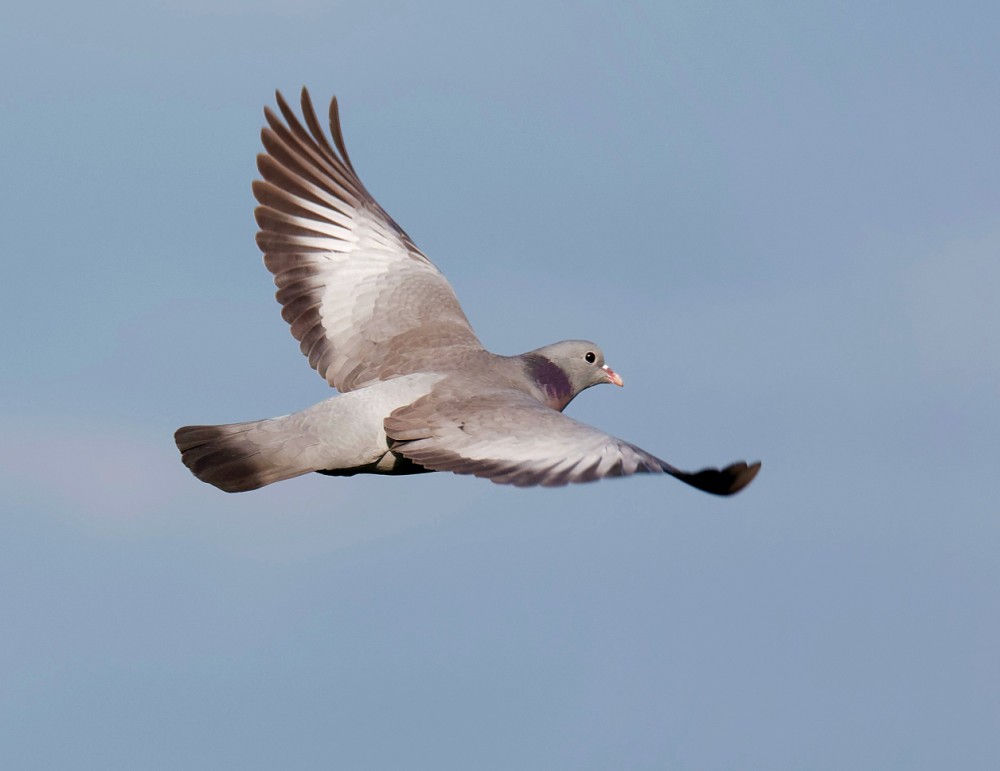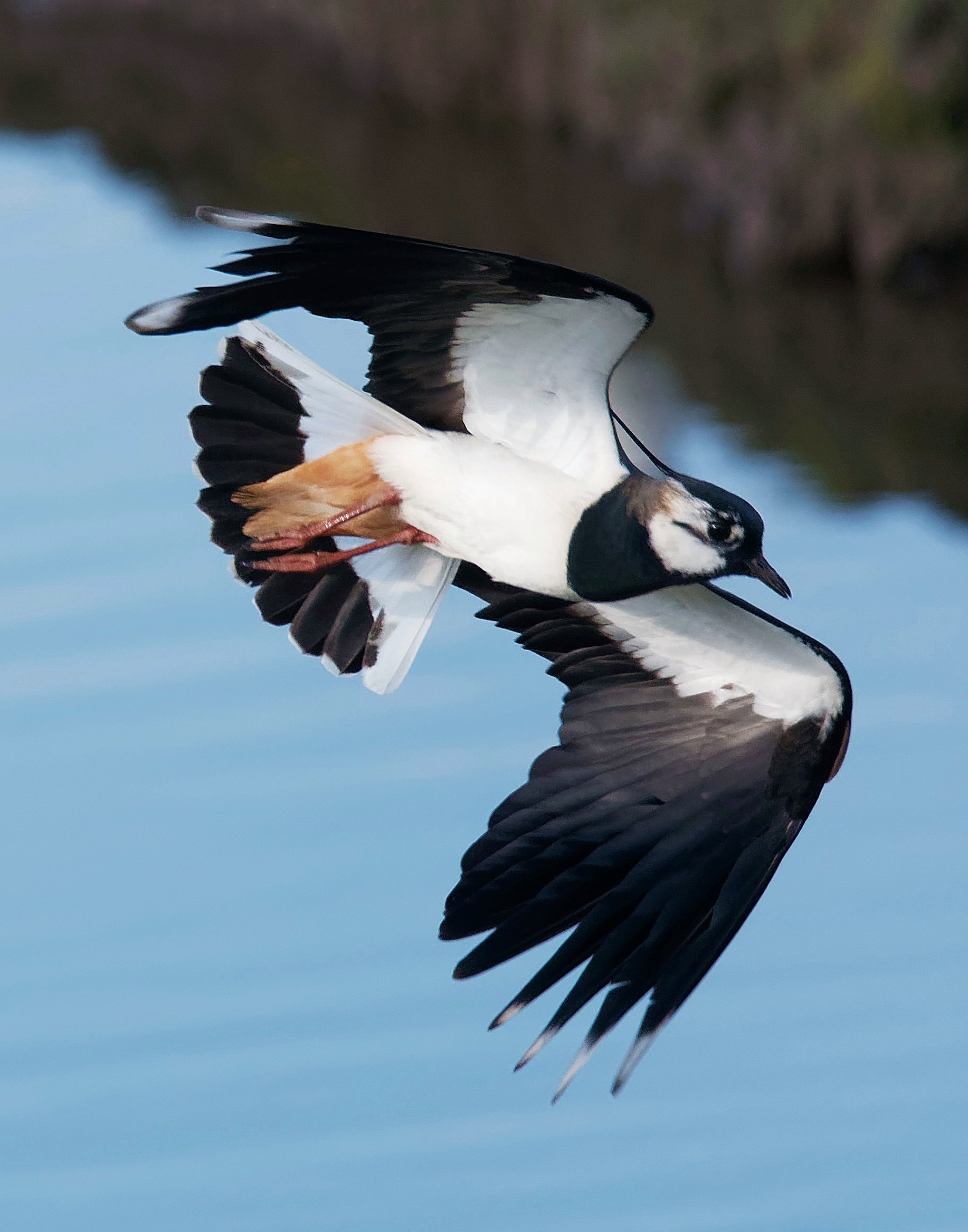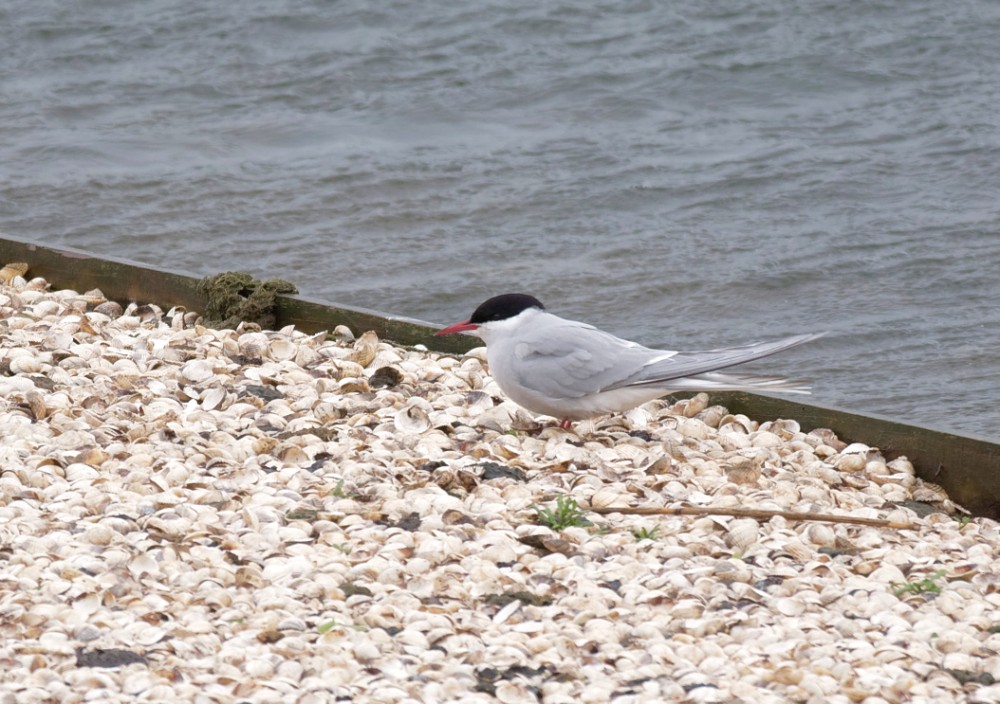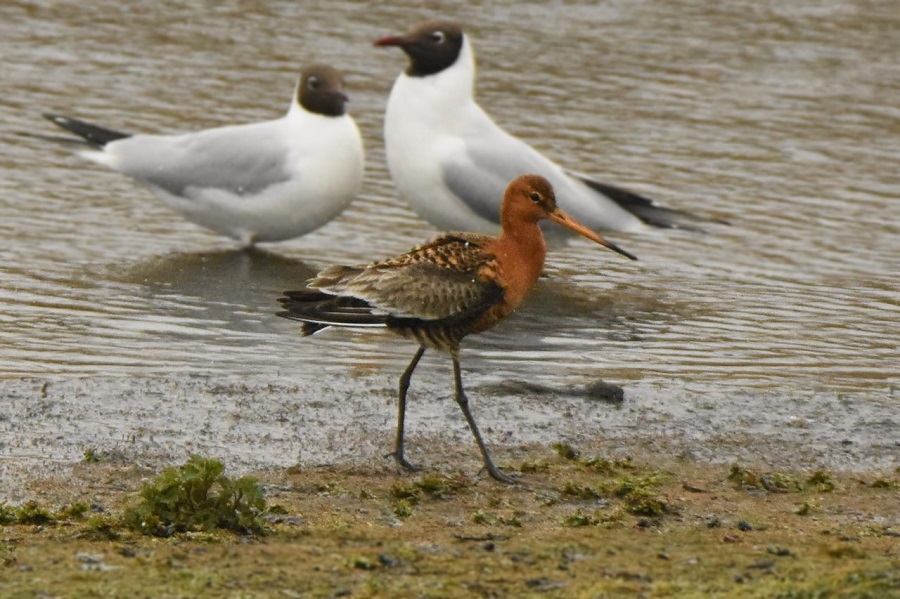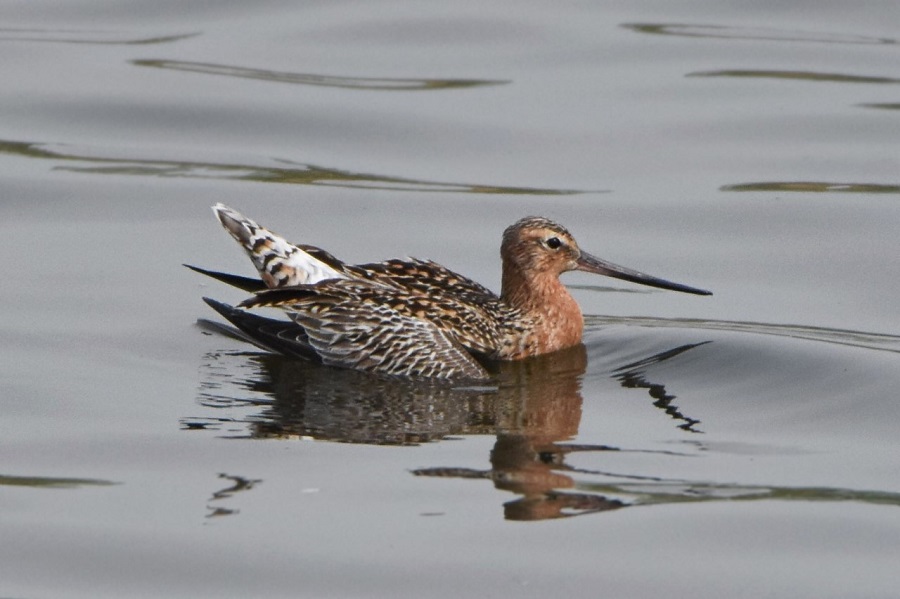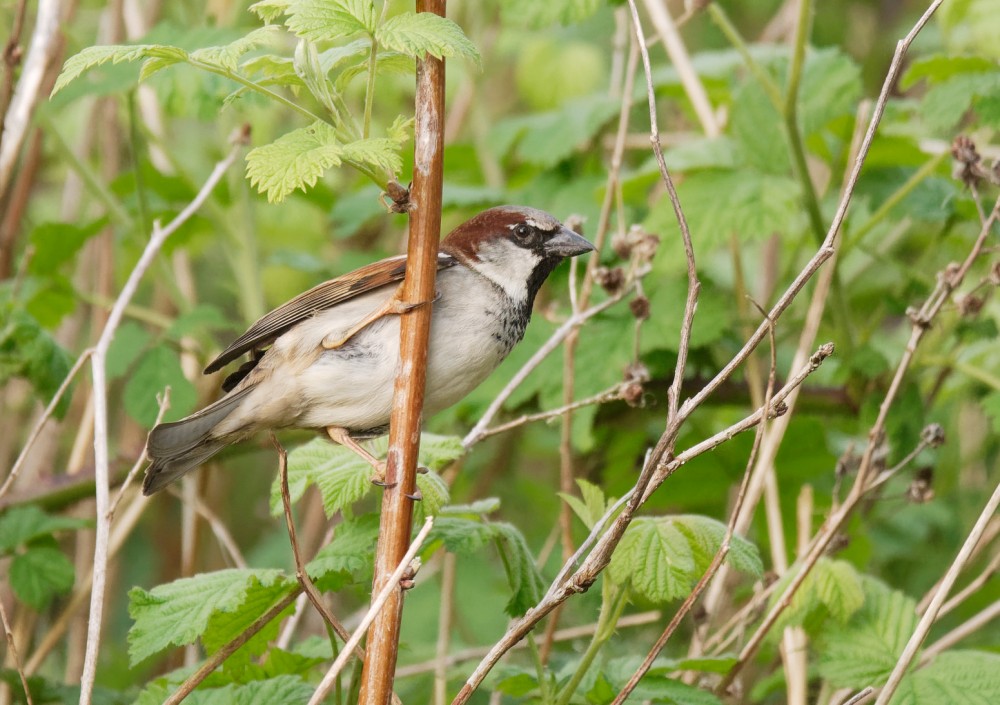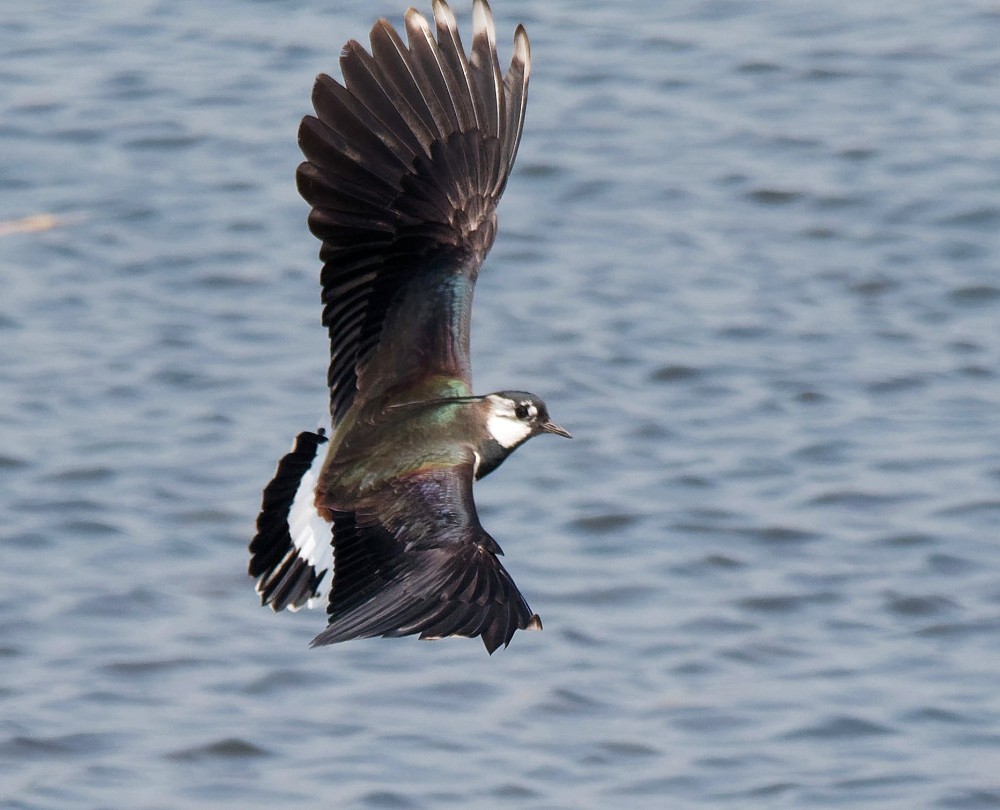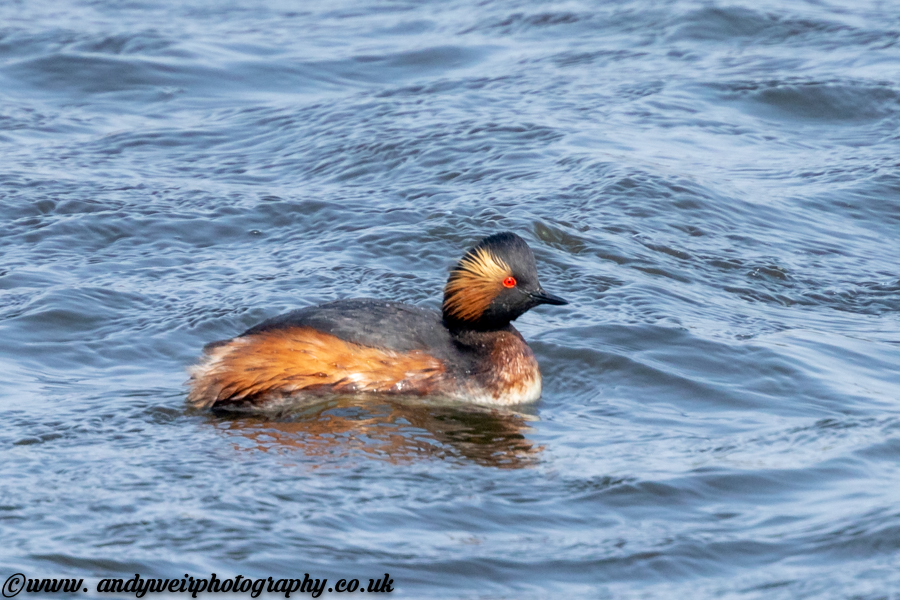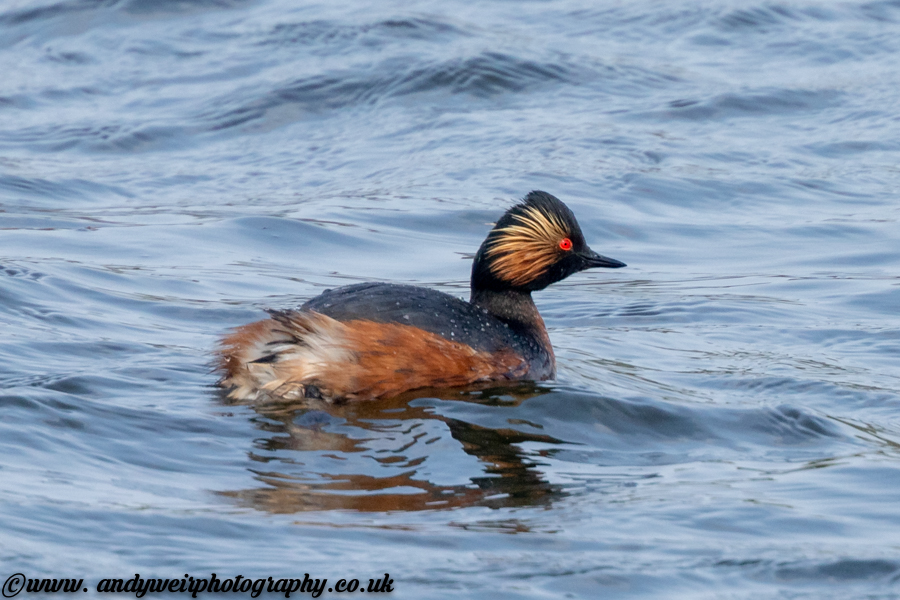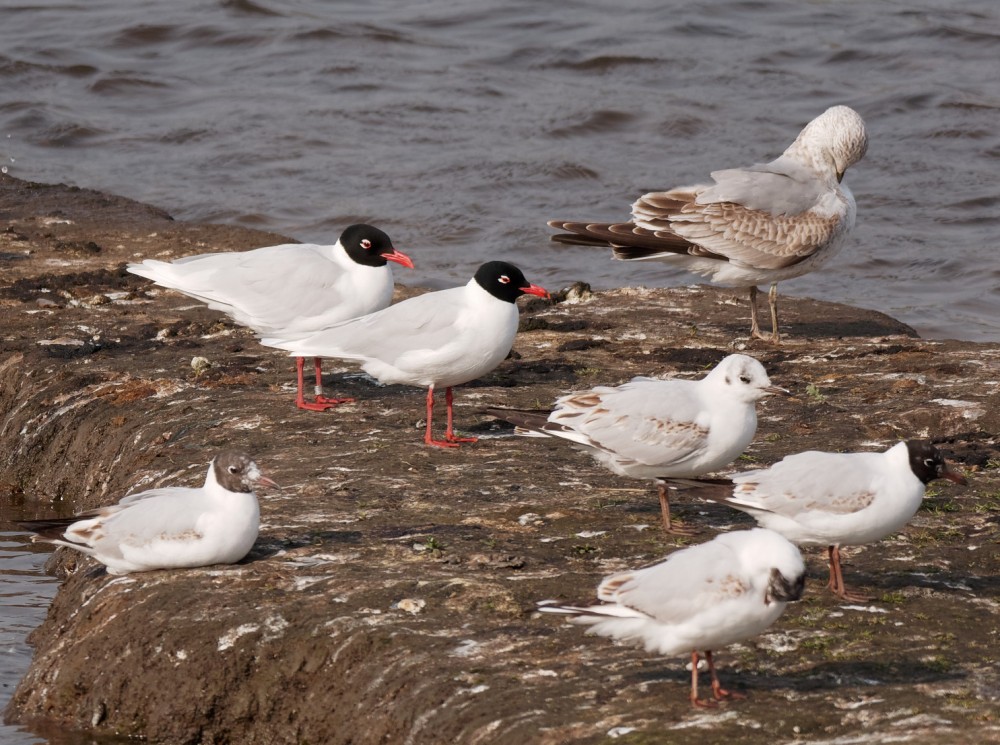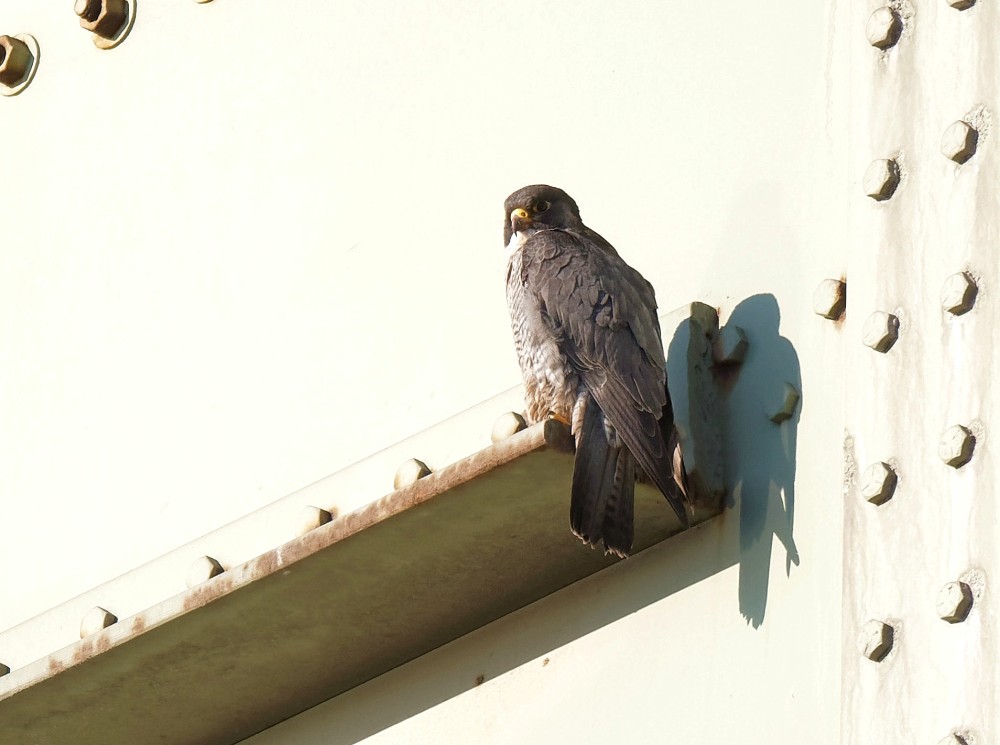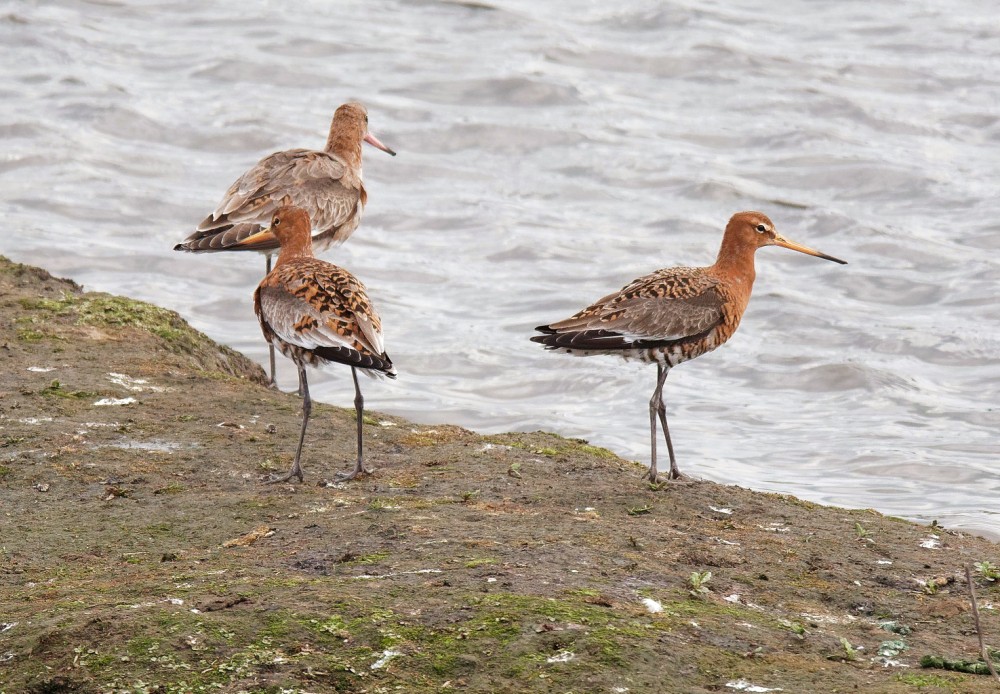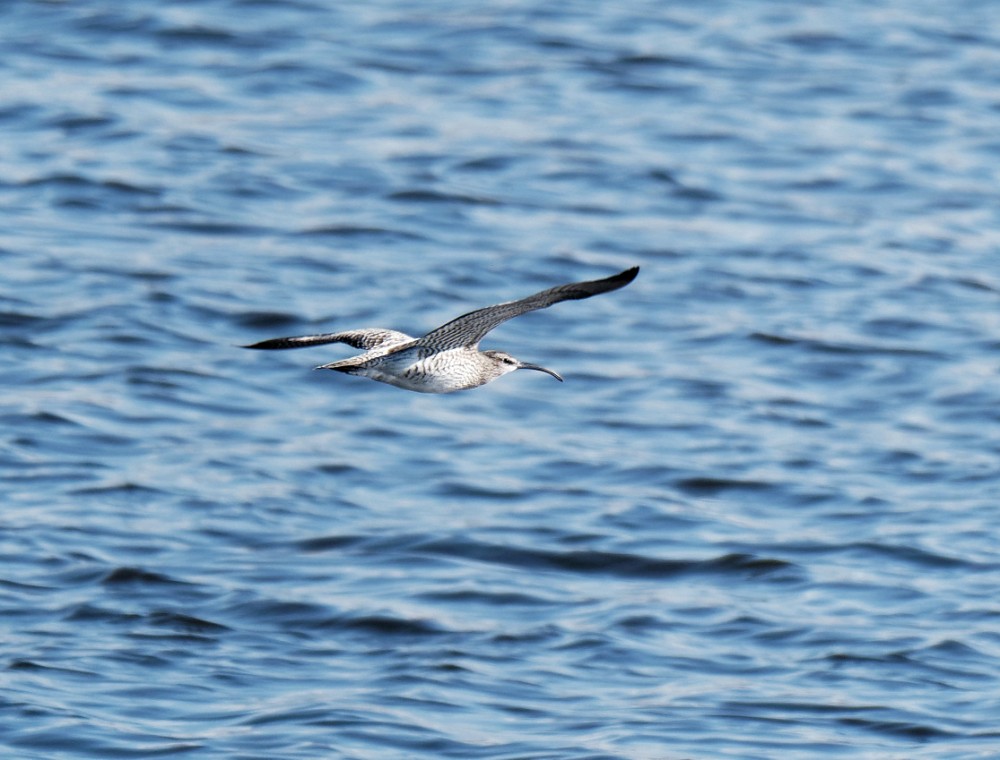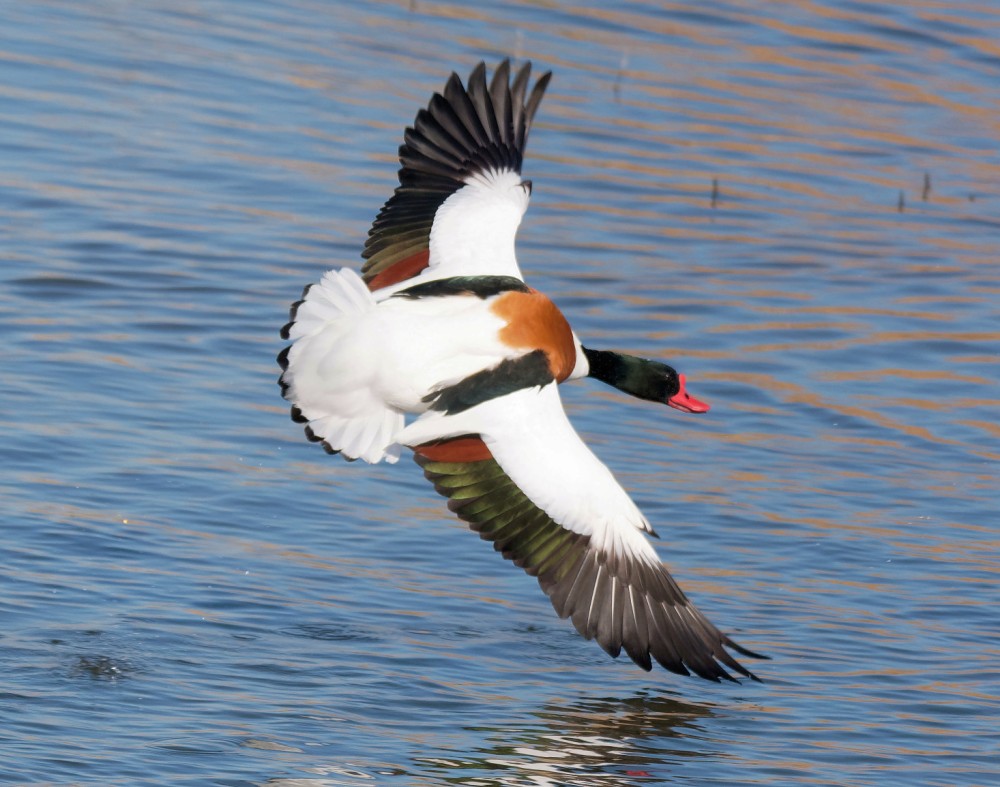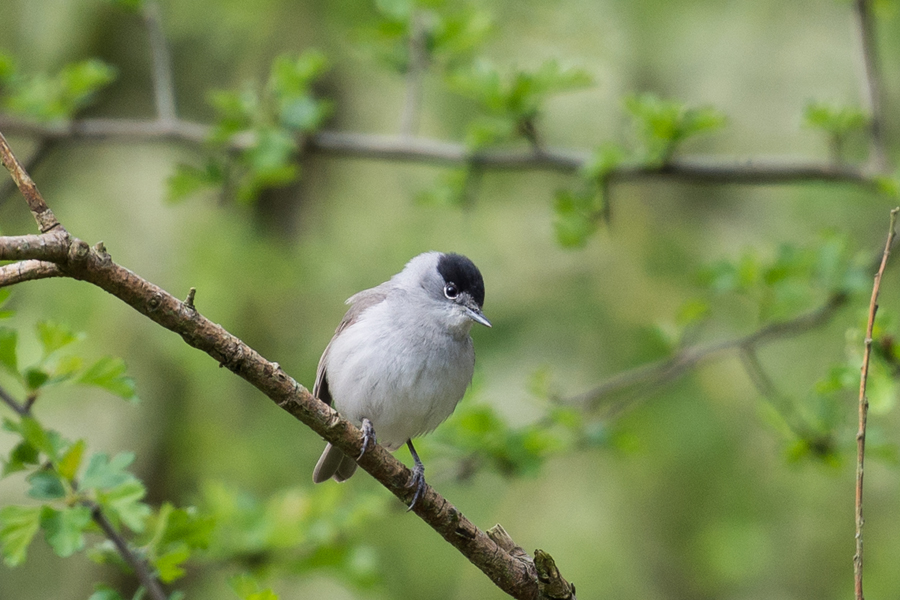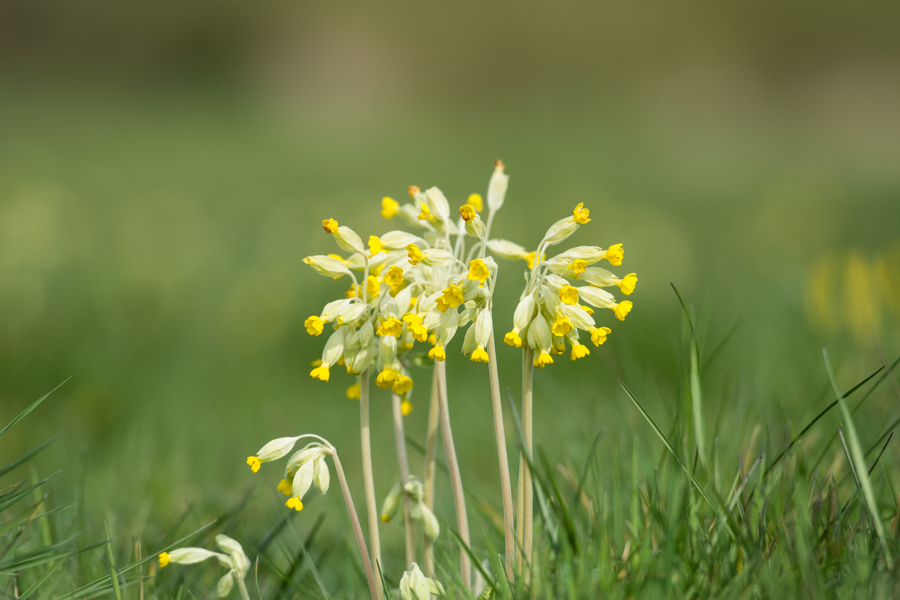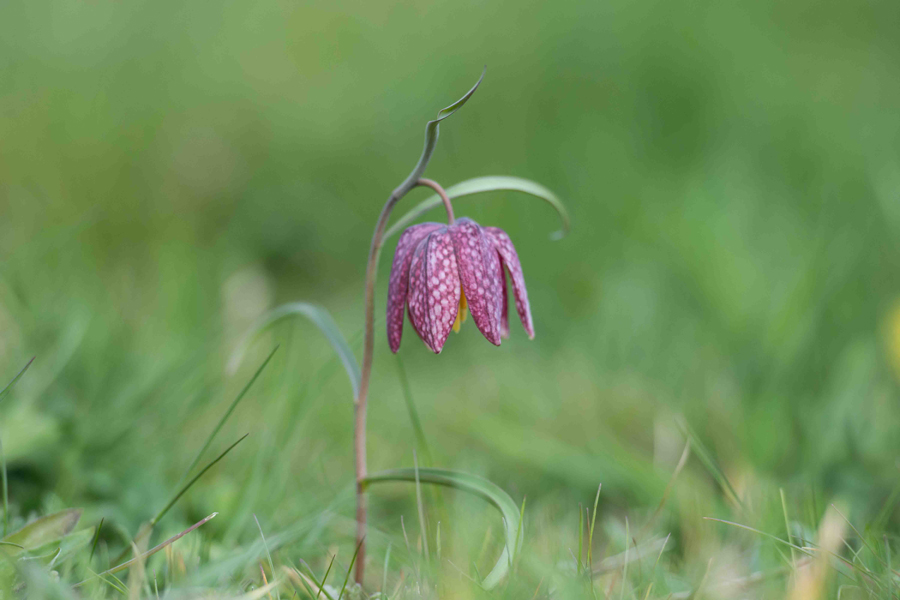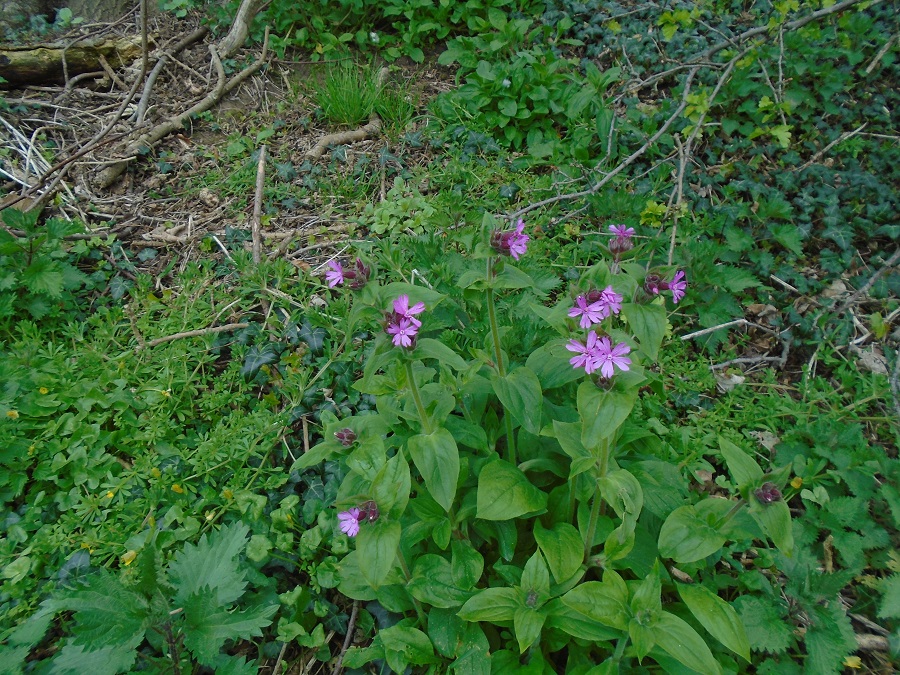Woolston Eyes Monthly Sightings
2019-04-29
A beautiful afternoon-till-dusk visit to No.3 bed delivered some excellent sightings today. Six Whimbrel and a Yellow Wagtail flew through, along with small numbers of all three hirundines. From the Morgan Hide c.240 Black-headed Gulls were constantly active, squabbling, mating and nest-building, with the nest-rafts alone holding c.45 birds on nests. The saga of the Lapwings on the Morgan Hide scrape continues, with a female again on a nest with one egg. The pair seem to have learned their lesson about the risk posed by Greylag Geese (which predated a previous set of eggs), as they remorselessly attacked them whenever they came near. Three Snipe were feeding together in one of the channels at the southern end of the bed. It’s a long time since Snipe bred on the Reserve but we can always hope. Daniel Owen went onto the Loop of No.4 bed earlier in the day, to confirm that the pair of Garganey are still present - another species which we’d like to confirm as breeding this year. He also recorded a Hobby, which flew south over No.3 bed in the morning. Cheers David Bowman
Submitted by: David Bowman
2019-04-28
28th April 2019. Brood of 12 Mallard chicks on river just west of bund. 12.30 Lesser Whitethroat calling along canal track east of middle barrier.
Les Jones.
Submitted by: Lesj
2019-04-27
With heavy squalls forecast, it was just the weather to huddle in the Morgan Hide and scan for migrating terns being forced down by the conditions. A single Common Sandpiper on the scrape was an initial reward for a 6.30 am start. Two adult Mediterranean Gulls then dropped in as the conditions continued to deteriorate. The first really heavy, wind-driven downpour brought down two Arctic Terns, which circled the bed a few times, looking to land on the nest rafts but being deterred by the resident Black-headed Gulls. All the while, odd hirundines were skimming through, beating low against the wind, eventually totalling 26 Swallows, 5 House Martins and 9 Sand Martins. A Little Ringed Plover then flew through before a period of sustained, horizontal rain brought in the final Arctic Tern of the morning. This one was more obliging, spending some time on the scrape, Vikki’s Island, before eventually flying off to the north-west, maybe heading to breeding grounds in Scotland or Iceland. Photo of one of the Arctic Terns Cheers David Bowman (with Helen Wynn, Alan Warford, David Spencer, Brian Baird and Daniel Owen)
Submitted by: David Bowman
2019-04-26
The Drake Garganey continues to perform on the loop of No.4 bed - calling and displaying at times. The first Lesser Whitethroat of the year was picked up yesterday and was still present today, along the canal track just beyond the entrance gate to No.4.
On No.3 the rain failed to produce any terns, but it did drop in a summer plumage Black-tailed Godwit, however it’s attempts to feed on the scrape were short-lived due to harassment from the Gadwall and Lapwing. There was another decent hirundine passage again today, but birds loitering whilst more arrived made exact counts tricky. Their presence did manage to pull in a Hobby which zipped past the John Morgan Hide heading NW.
Submitted by: Daniel Owen
2019-04-24
The day started dull and rather cool but warmed up by late morning with some pleasant sunshine and a temperature of 18 degrees. I finally caught up with the male Garganey on the Loop of No.4 bed where it was showing well from the hide. There was no sign of the female however. A Mallard on the river had a brood of 14 very small young and 54 Lesser Black-backed Gulls were in the basin with another 20+ over No.1 bed. Whitethroats seemed to be everywhere after an arrival in the past few days. As the sun came out so did the butterflies and I was able to add another 16 Orange Tips to the reserve total making 134 plus another 16 along the river. Also of note were a male Brimstone in the wood to the north of No.1 bed and a female on the west bank of No.2 bed. Photo; male Brimstone
Submitted by: Dave Hackett
2019-04-24
With a steady easterly wind blowing yesterday, there was always a chance that something interesting would turn up. Daniel Owen, who was down early, had the best of the day, with a Bar-tailed Godwit dropping briefly onto No.3 bed (our first sighting since 2011). On No.4 bed he recorded: a pair of Garganey, a Little Ringed Plover, a reeling Grasshopper Warbler, 4 Goosanders, 5 House Martins, 4 Reed Warblers and 26 Whitethroats. By the time I arrived in early afternoon there was little observable migration, other than a handful of Sand Martins, though a Cuckoo flying over the reed-bed and perching in a tree on the east bank of No.3 bed was a welcome sight. The two nesting Lapwing females on the Morgan Hide, Vikki’s Island scrape, have suffered different fates, with one nest having lost all three eggs and the other still seemingly OK. The female from the predated nest was showing every sign of making a second nesting attempt, trying out the male’s newly dug nest scrape for size - something about the triumph of optimism over experience, I suspect. Photo of Gadwalls in courtship chase. Cheers David Bowman
Submitted by: David Bowman
2019-04-23
The pair of Garganey on the loop of No4 bed. They showed well with some displaying from the drake before flying East along the Mersey, presumably to No3 bed.
Submitted by: Daniel Owen
2019-04-23
Another nice morning to be out, and I was on No4 bed by 7 o’clock. My early rise was once again rewarded with good views of the Garganey pair, which have now been here for a week. Other sightings included 4 Goosander over, a fly-through Little Ringed Plover and 5 House Martin. Another strong arrival of warblers over the weekend resulted in 26 Whitethroat (22 singing males), 7 Reed Warbler, Grasshopper Warbler, and 3 Cetti’s Warblers around the bed. Then onto No3 where a Little Ringed Plover showed well on the scrape, before a Bar-tailed Godwit graced the bed – for all of 6 minutes before heading high NE (the first record for the reserve since May 2011!)
Submitted by: Daniel Owen
2019-04-20
This morning I carried out a common bird and breeding wildfowl survey on the northern half of No.4 bed. There were good numbers of Gadwall on the Loop, together with 3 pairs of Lapwing. The following counts were mostly of singing males; 8 Willow Warblers, 21 Wren, 11 Robin, 4 Whitethroat, 13 Chiffchaff, 26 Blackcap, 3 Song Thrush, 6 Chaffinch, 2 Cetti’s Warblers, 6 Dunnock and 5 Reed Warblers. Later in the morning there were plenty of butterflies including 18 Orange Tips in an area not covered earlier in the week. This makes a reserve total of 119 for this species, a quite remarkable number!
Submitted by: Dave Hackett
2019-04-19
Late afternoon visit on hottest day of the year. Some good birding with a fine pair of Garganey in front of the Morgan hide where also two broods of Greylag Geese,3 and 9 young respectively.A careful count revealed 23 Black necked Grebes but on leaving the 3 birds that have frequented the front of a channel towards the north-east corner of the main pool suddenly appeared so it is highly probable that 26 were present overall.49 Gadwall were noted most paired as were the 22 Shoveler. Up to 15 Pochard wre present and 5 Shelduck.At the Rotary hide a female Mallard was with no less than 11 very small young,the first duck brood of the year. A single Mute Swan adult was present below the footbridge on to the bed only able to move in circles. It is likely to have fishing line around one of its legs and hopefully it can be rescued and examined. Lots of butterflies on the bed including Orange Tips and 2 Brimstones.
Submitted by: Brian Martin
2019-04-19
Photo of two male Gadwalls in a courtship chase, from No.3 bed.
Cheers David
Submitted by: David Bowman
2019-04-19
Yesterday we were out early,completing a Breeding Bird Survey of No.2 bed. Results from the survey (which primarily counts males in song) included: 7 Greenfinches, 7 Song Thrushes, 17 Robins, 28 Wrens, 10 Great Tits, 3 Cetti’s Warblers, 5 Dunnocks, 2 Reed Buntings, 30 Blackcaps, 18 Chiffchaffs and 5 Willow Warblers. We’ll re-survey all four beds again in May and June, as some of the migratory warblers will move on and others will arrive. Analysis of the data, which we’ve been collecting for 30 years, enables us to monitor changes in our breeding population. Sightings from No.3 bed included a pair of Mediterranean Gulls and a passage of 60 Sand Martins and 6 Swallows.
Photo of a House Sparrow from No.3 bed
The link is to a brief video clip showing: displaying Shovelers, the male Lapwing on the Morgan Hide, Vikki’s Island scrape, preparing a nest for his third female, second calendar year and adult Common Gulls, Little Grebe, Black-necked Grebes and some close-ups of a displaying pair of Mediterranean Gulls.
To watch David’s video click here………..
or copy and paste this link into your browser https://youtu.be/zShb0LiZJpQ
Cheers David Bowman (with Dave Steel, David Spencer, Alan Warford and Les Jones)
Submitted by: David Bowman
2019-04-17
A glorious spring day with the temperature reaching 19 degrees by lunchtime and unbroken sunshine. Warblers are now arriving in good numbers with reserve counts of 49 Blackcap, 33 Chiffchaff, 14 Willow Warbler and the first Reed and Sedge Warblers and Whitethroats of the year. The undoubted highlight of the day had to be the unprecedented numbers of Orange Tip butterflies with about a hundred present across the reserve. This was an amazing total by far exceeding the previous record count of 39 in 2017. Other sightings of interest were 4 Brimstones, including a female found by Dave Riley on No.2 bed, 26 Speckled Wood, 28 Peacock and 22 Small Tortoiseshell. Singles of Small and Green-veined White added to the variety. Photo; Green-veined White
Submitted by: Dave Hackett
2019-04-17
A pleasant, sunny afternoon on No.3 bed produced some good birds today: singing Sedge Warbler and Reed Warbler added to the numerous singing Blackcaps, Willow Warblers and Chiffchaffs, backed by the constant cacophony of the Black-headed Gull colony. This latter is now holding at least 750 gulls and we’re hoping for a good breeding season after last year’s disaster. The Lapwing population is also looking good, with maybe a dozen sitting females across the Reserve. On the Morgan Hide scrape, the male now has three females, one incubating three eggs, one sitting tight, though we haven’t seen any eggs yet and another with which he was vigorously mating. Black-necked Grebes are also at their highest level for a few years, with at least 25 present. We’re also hopeful that some of the five Mediterranean Gulls, which kept coming and going all afternoon, will stay and breed, as they’ve threatened to do in most recent years. The first couple of Coot broods have already appeared and wildfowl numbers look good, too, with c.25 pairs of Gadwall, 12 of Teal, 10 of Shoveler, 6 of Pochard and 7 of Tufted Duck scattered around the bed. Meanwhile, the drake Garganey is still skulking in the reeds, over on the Loop of No.4 bed. Photo of a displaying Lapwing Cheers David Bowman
Submitted by: David Bowman
2019-04-15
Black-necked Grebe (podiceps nigricollis)from The John Morgan Hide
Submitted by: Andy Weir
2019-04-15
Black-necked Grebe (podiceps nigricollis)from The John Morgan Hide
Submitted by: Andy Weir
2019-04-15
With a fresh south-south-easterly blowing it was always going to be a day for observing migration at Woolston Eyes. Daniel Owen had an excellent morning, finding a pair of Garganey on No.4 bed, a male Marsh Harrier passing over No.2 bed and four Mediterranean Gulls in No.3 bed. By the time I got there, at lunchtime, just a few Sand Martins were passing through, though eventually all four Mediterranean Gulls returned to the bed, including two which landed on the Morgan Hide scrape (one of which was ringed).
Photo of two Mediterranean Gulls from this afternoon.
Cheers David Bowman
Submitted by: David Bowman
2019-04-14
A total of 24 Black necked Grebes on No.3 bed and also a Marsh harrier caused much confusion among the wildfowl. Black necked count highest since 2014.
Submitted by: Brian Martin
2019-04-13
Photo of the male Peregrine from Thelwall Viaduct
Cheers David
Submitted by: David Bowman
2019-04-13
Photo of some of this morning’s Black-tailed Godwits.
Cheers David
Submitted by: David Bowman
2019-04-13
With a calm, frosty dawn and the prospects of a cool, freshening east-south-easterly breeze developing, it always felt like a good morning to be out on the Reserve. Dave Steel and I started with a 6.30 am Breeding Bird Survey on No.1 bed, before later joining the others in the Morgan Hide to scan for migrants. No.1 bed, as ever, delivered some good breeding information, with three pairs of Little Ringed Plover, a pair of Lapwings, three singing Cetti’s Warblers, the resident Peregrines on the Viaduct showing every sign of breeding plus 9 Blackcaps, 8 Willow Warblers and 8 Chiffchaffs in song. After breakfast in the Morgan Hide on No.3 bed, it was all eyes peeled for migratory movement. Highlights included: 2 Whimbrel which flew through, 7 Black-tailed Godwits which dropped onto the scrape, plus a light movement of hirundines totalling 5 House Martins, 27 Swallows and 45 Sand Martins. A count of 21 Black-necked Grebes then rounded off a brilliant morning. Record shot of one of this morning’s Whimbrels Cheers David Bowman (with Dave Steel, Alan Warford, Sue Haddock, Les Jones and David Spencer)
Submitted by: David Bowman
2019-04-11
A lovely spring day although cold and frosty first thing! I heard my first singing Willow Warbler on No.1 bed and about ten Blackcaps were in song across the reserve. One of the Peregrines was on the viaduct. On No.3 bed David Bowman and I found 21 Black-necked Grebes and a pair of Coots with seven small young were the first of the year. Four Lapwing were on the scrape including one sitting on three eggs and a further four were on the Loop islands. A Cetti’s Warbler was singing on Butchersfield Tip and six Little Grebes were on the Loop of No.4 bed. After a cold start butterflies began to appear in good numbers from lunchtime onwards; notable were 27 orange Tips including three males trying to mate with a female(!), 20 Peacock, 13 Small Tortoiseshell, 19 Speckled Wood, 2 Comma, 3 Small White and the first two Green-veined Whites of the year. Photo; female Orange Tip on No.3 bed
Submitted by: Dave Hackett
2019-04-10
With the winds looking favourable for bringing migrants in, I dashed down to No.3 bed at mid-day today. For the first couple of hours in the Morgan Hide, things were fairly quiet, in terms of bird movement and I relaxed to enjoy watching and photographing the breeding behaviour of the local grebes, wildfowl and Black-headed Gulls. Then, after a couple of hours, there was a sudden flurry of activity. First, an Osprey passed over at great height, being chased westward by a Raven. Then a single Dunlin flew in, circled the bed, thought about landing on the scrape and then it too went westward. Then a handful of Swallows were followed by a flood of Sand Martins. with 220 counted through in an hour. Always brilliant to see migration in action. Cheers David Bowman
Submitted by: David Bowman
2019-04-10
A nice couple of hours on Number 3 Bed, the sun was out and the birds were singing, butterflies and nice flowers to see picture of Blackcap (Sylvia atricapilla)
Submitted by: Keith Gallie
2019-04-07
A quick couple of hours on No.3 bed at Woolston Eyes today, from 6.15 am and back home in time for breakfast! At first light, a Common Sandpiper was perched on one of the gull nesting rafts and some of the 17 Black-necked Grebes present were feeding and pairing in front of the Morgan Hide. On the scrape and Vikki’s Island, the male Lapwing has one female on three eggs and was again trying to entice a second female to look at the couple of other nest scrapes he was busy making. The Black-headed Gull colony is currently holding in excess of 500 birds, though we expect this number to grow as the month progresses. The gulls were very active, with nest-building, courtship feeding and mating happening all around the bed. Gadwall, Shoveler, Teal, Mallard, Tufted Duck, Pochard and Little Grebes are also pairing up and will soon be nesting. Finally, 20 Sand Martins moved through in an hour, not stopping to feed but heading determinedly north. The link is to a short video clip showing some of the morning’s activity.
To watch David’s video click here………….
or copy and paste this link into your browser https://youtu.be/l710NmV9eF4
Cheers David Bowman
Submitted by: David Bowman
2019-04-07
It was good to get back on No.3 bed yesterday, after a time away. After a 6.30 am start we spent most of the time scanning for migrants from the Morgan Hide, with a break for a co-ordinated count of Black-necked Grebes. Breeding activity was very evident. The male Lapwing on the scrape and Vikki’s Island has one female on three eggs and another female he was busy mating with. The Black-headed Gulls at the colony swelled to 550 over the morning and pairing and mating activity was constant. Other sightings included: 17 Black-necked Grebes, 7 Bramblings, 2 Lesser Redpolls, 1 Merlin, 1 Peregrine, 8 Common Buzzards, 4 Sparrowhawks, 1 Raven, 1 Water Rail, 1 House Martin, 2 Swallows, 62 Sand Martins, 3 Cetti’s Warblers, 7 Chiffchaffs and three Blackcaps. Cheers David Bowman (with Dave Steel, Helen Wynn, Alan Warford, Kelly Ainsworth and Les Jones)
Submitted by: David Bowman
2019-04-05
After the cold wet weather of yesterday a better day but still cool and breezy.A good morning with a total of 17 Black necked Grebes on No.3 bed. Two adult Mediterranean Gulls on water by one of the rafts on east pool throughout the morning.Also,3 singing Willow Warblers on the bed. Large numbers of paired Gadwall notably inside the east bank and north east pool In all a minimum of 25 pairs found. Three singing Cetti’s Warblers. A Little Grebe with nest material on north east pool.Many Tufted Duck on both the bed-up to 60 and the Canal ca.50.A few hirundines,mainly Sand Martins but nothing like the numbers of earlier in the week.
Submitted by: Brian Martin
2019-04-03
A much colder day today and fairly quiet on the reserve with fewer birds in song than last week. A minimum of 13 Black-nseked Grebes (probably 15) were on No.3 bed together with the first House Martins of the year as far as I am aware. Wildfowl totals included 255 Tufted Duck, 19 Great-crested Grebe, 75 Gadwall and 52 Coot. A pair of Mute Swans is building a nest on one of the pontoons at Latchford Locks. Photo; Campion by the river
Submitted by: Dave Hackett


